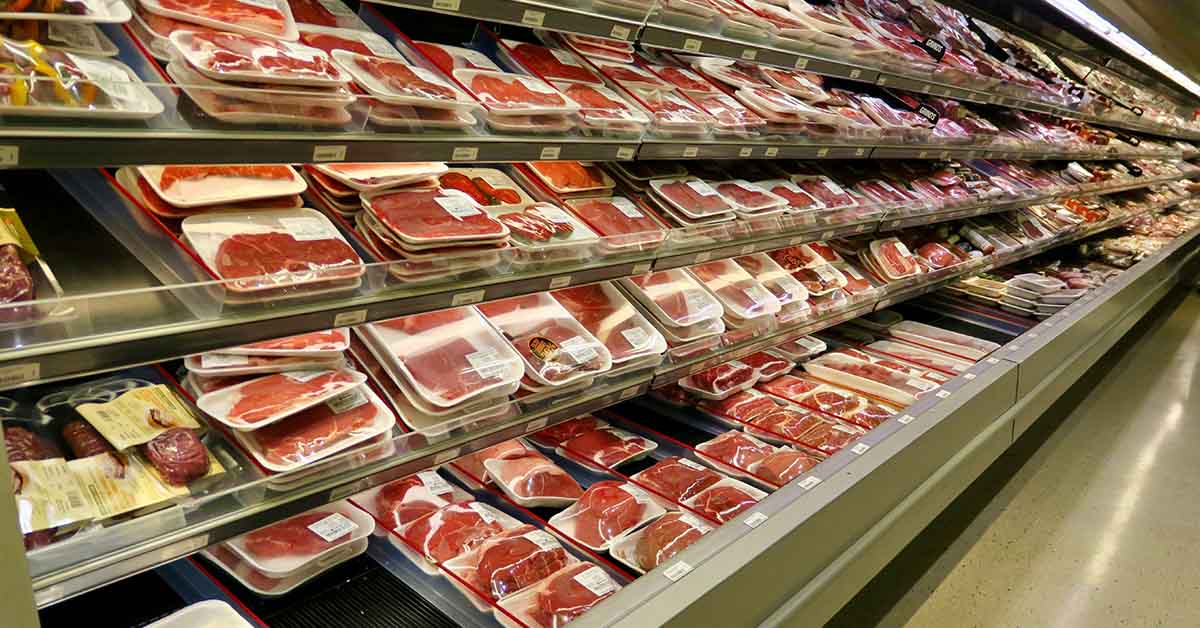When shopping for clothes, the clearance rack is a great place to find items from last season but in perfect condition. Food on clearance follows a similar method. You get a great price but it’s typically for food about to expire. Unlike clothes, food rots, so the bargain may not be worth it. But if you’re making apple crisp or banana cake, produce on sale might be ideal. However, meat on clearance may be more harmful than helpful. You just need to know what to look out for.
No Expiration Dates
First off, it’s important to know that meat packaging is not required to have expiration dates. So companies choose to add sell by, best by, and use by dates. But none add a specific expiration date you’d see on milk or similarly perishable goods. That’s because it’s difficult to predict meat shelf life since the freshness can be affected by the products’ preparation, packaging, storage, shipping, and other factors. Since there’s no hard and fast rule on how long meat lasts, the shop manager and consumer have to decide what’s good.
What Do Quality Dates Mean?
The purpose of sell by dates is to inform retailers so they can put older products in the front of the display case. Look out for these because they get marked down when a new shipment is about to arrive.
Meanwhile, best by and use by dates are just recommendations about the meat’s quality. Basically, the store doesn’t want you to judge their products based on the ones close to the end of their use by dates since they’re not as fresh as those recently butchered. However, although they may be a little less tasty or juicy, they are perfectly fine to use as long as the packaging is airtight with no leaking. It’s a simple trade-off, a little less quality for a better price without compromising on safety.
How to Check Meat on Clearance
As previously mentioned, the quality of meat depends on multiple factors surrounding its preservation, like the packaging, temperature, length of time on shelf, etc. Therefore, it’s crucial to know how to distinguish a fresh steak from a rotting one.
Bright red meat is an indicator of freshness but browning or graying on the inside does not necessarily mean the product is going bad. It could just be caused by a lack of exposure to oxygen. But if the discoloration is appearing on the outside, it’s starting to rot but it may be still safe to eat.
Other signs of rotting are sliminess, stickiness, mushiness, and a strong foul smell. In these cases, the product most likely has become unsafe to consume.
Read More: The Type Of Cheese That Has More Protein Than Cooked Meat And Fish
How to Check Poultry on Clearance
Raw poultry should look light pink with white fat, although the shade of pink may slightly darken or lighten. But gray or green flesh and/or yellow fat means the piece is spoiled. Similar to meat, if the poultry is sticky, slimy, mushy, or has a foul odor, it has gone bad. And if you see mold growth or other signs of rotting, throw the entire piece out.
Storing Expiring Meat
Proper storage is key for all meat and poultry, but especially for those on clearance. Put the products in secure, tight, and non-leaking packaging and store them under 40 degrees Fahrenheit. Cook the meat as soon as possible or freeze it immediately. Then thaw it in the fridge and use it within two days. If you’ve forgotten to defrost, you can skip that step and cook the meat while it’s still frozen, just remember to extend the cooking time.
Read More: Would You Try Human Meat, if it was Grown in a Lab?
Sources
- “Are Those “Clearance” Meats Really Safe to Eat?” All Recipes. Su-Jit Lin. February 10, 2021
- “When Raw Meat Changes Colour: How To Check For Safety.” Australian Institute of Food Safety. October 27, 2021
- “How to Tell if Chicken Has Gone Bad.” Healthline. Katey Davidson, MScFN, RD, CPT. April 30, 2024

